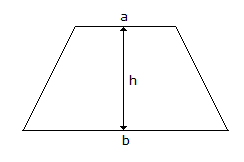Civil Engineering :: Applied Mechanics
-
The resultant of two forces acting at right angles is \(\sqrt{34} \)kg and acting at 60° is 70 kg. The forces are
-
The velocity of a body fallen from height h, on reaching the ground is given by
-
Two particles have been projected at angles 64° and 45° to the horizontal. If the velocity of projection of first is 10 m/sec, the velocity of projection of the other for equal horizontal ranges is
-
μ is coefficient of friction. A wheeled vehicle travelling on a circular level track will slip and overturn simultaneously if the ratio of its wheel distance to the height of its centroid, is
-
The necessary condition of equilibrium of a body, is :
-
A trolley wire weighs 1 kg per metre length. The ends of the wire are attached to two poles 20 m apart. If the horizontal tension is 1000 kg, the central dip of the cable is
-
Principle of Transmissibility of Forces states that, when a force acts upon a body, its effect is
-
A ball is dropped from a height of 2.25 m on a smooth floor and rises to a height of 1.00 m after the bounce. The coefficient of restitution between the ball and the floor is
-
The centre of gravity of the trapezium as shown in below figure from the side is at a distance of

-
If the linear velocity of a point on the rim of a wheel of 10 m diameter, is 50 m/sec, its angular velocity will be


 Whatsapp
Whatsapp
 Facebook
Facebook

